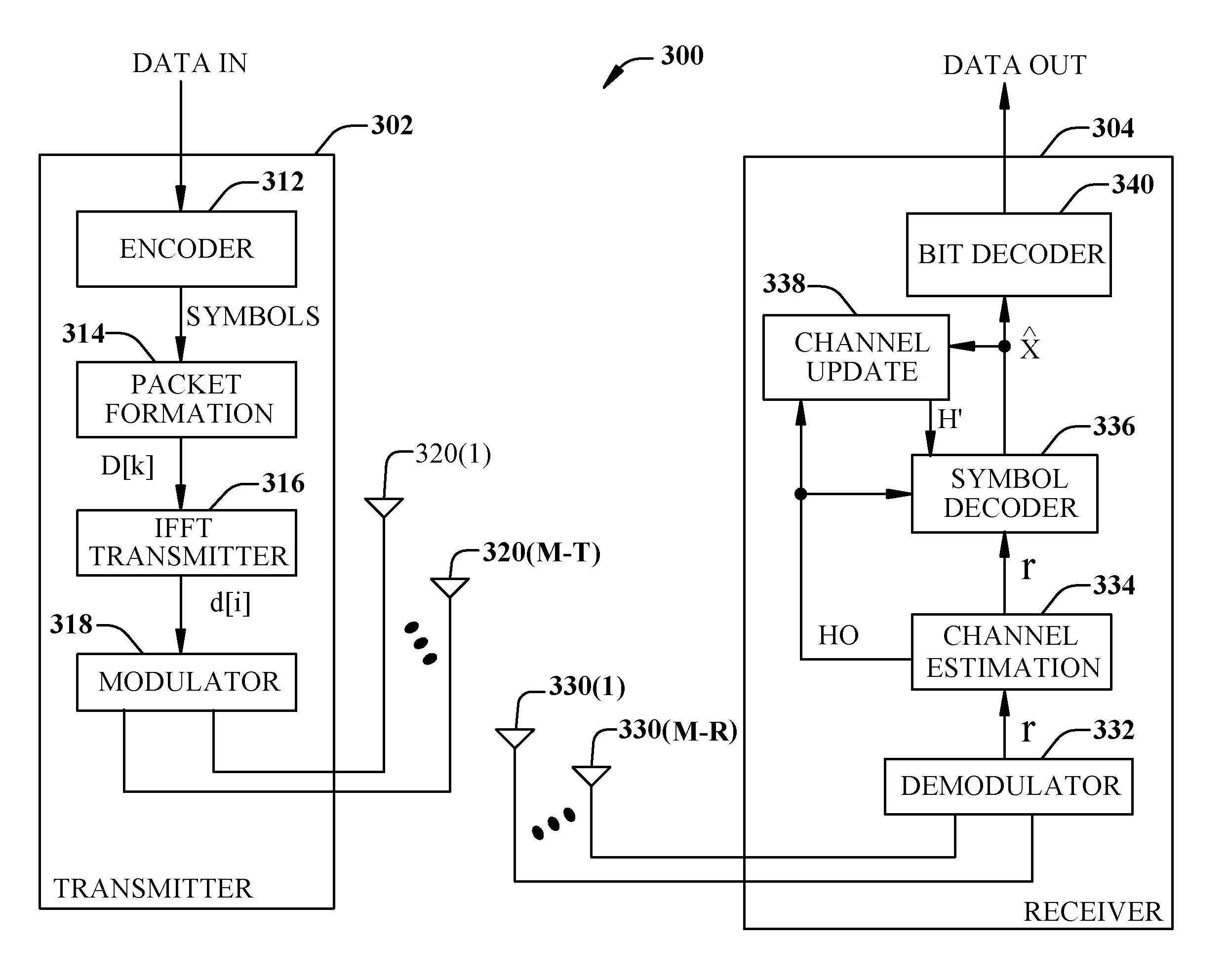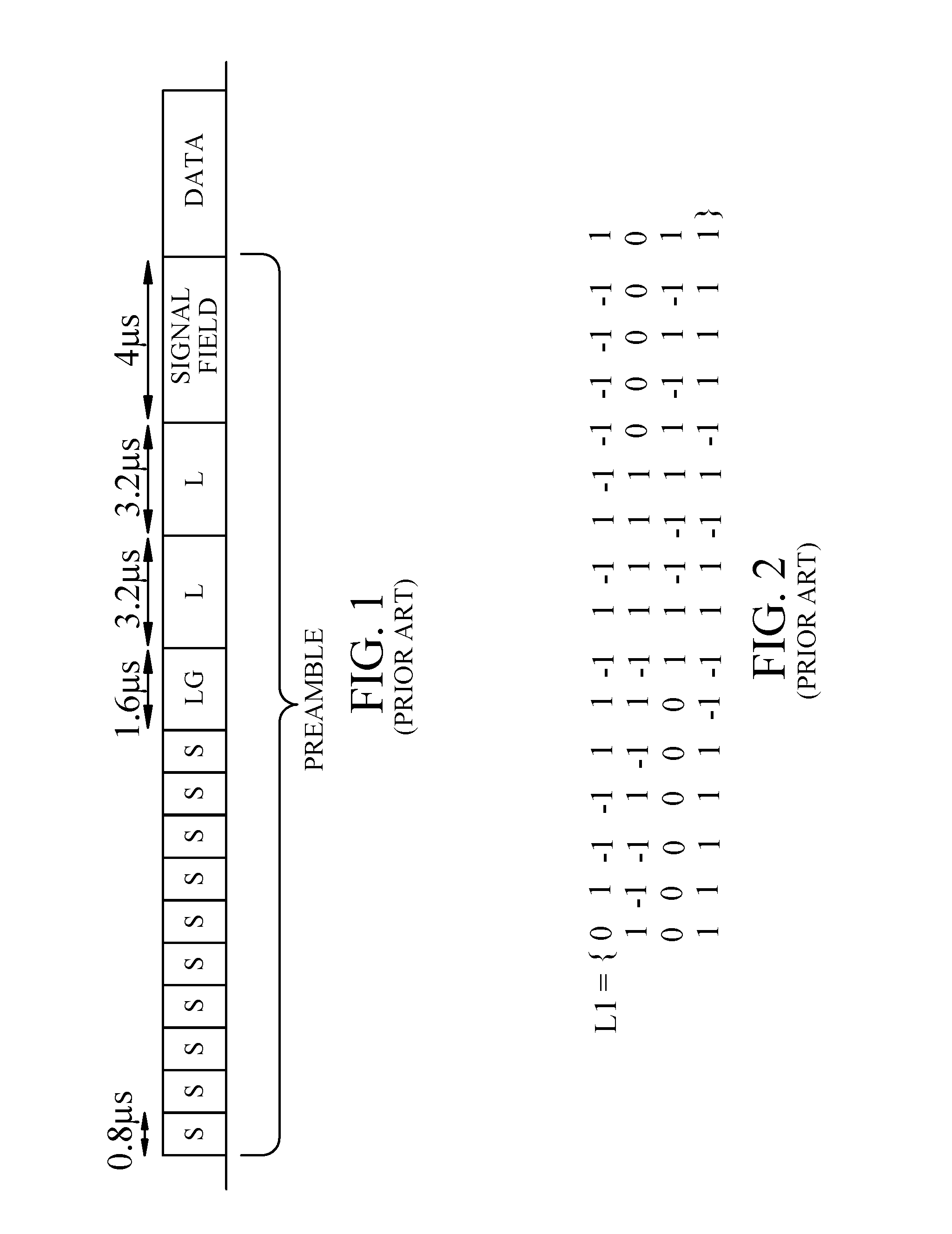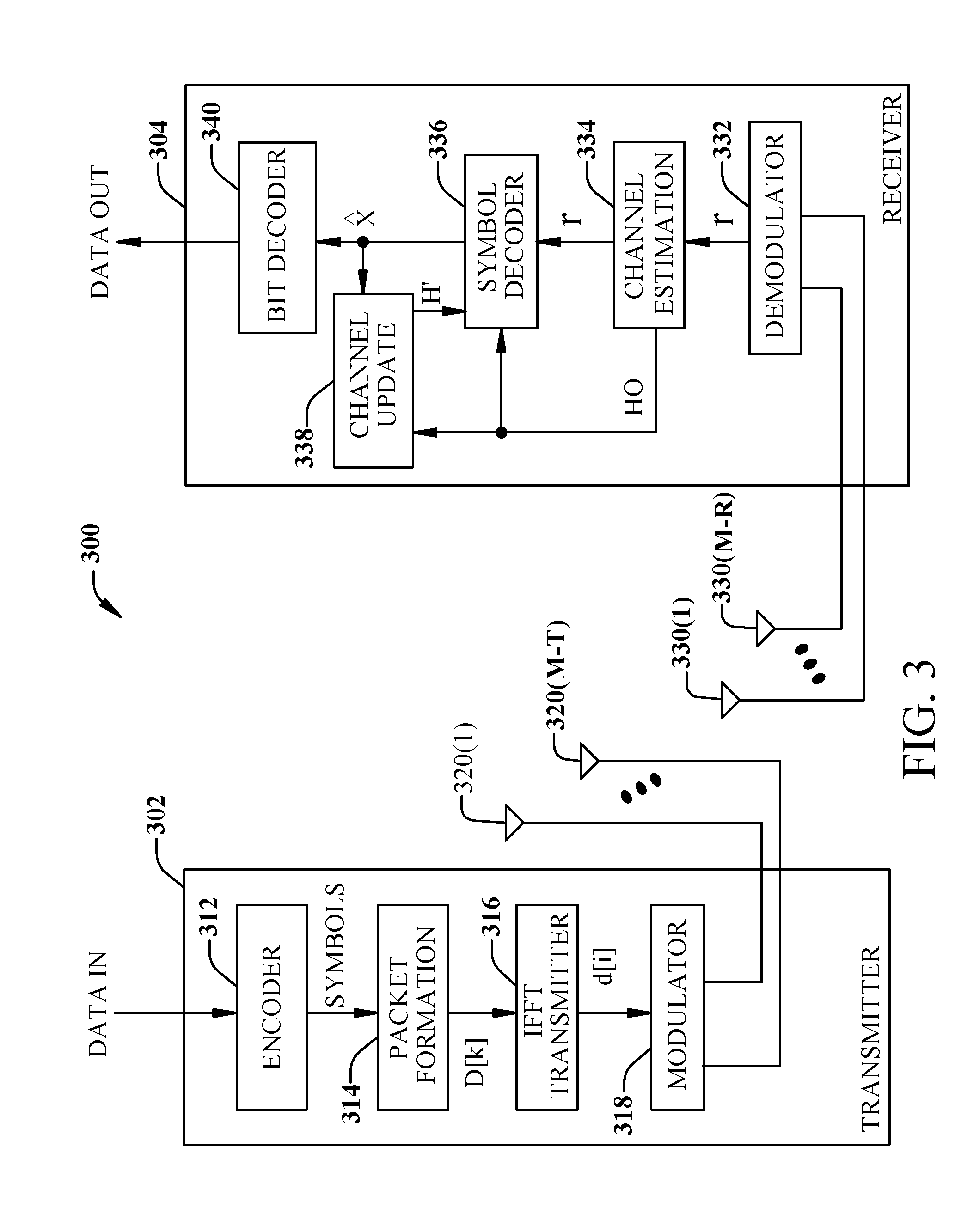Channel estimation for OFDM communication systems including IEEE 802.11A and extended rate systems
a communication system and channel estimation technology, applied in the field of channel estimation in communication systems, can solve the problems of reducing the signal quality of the received signal, affecting the received signal, and fading delay, and achieving the effect of improving the signal-to-noise ratio of the channel estimation
- Summary
- Abstract
- Description
- Claims
- Application Information
AI Technical Summary
Benefits of technology
Problems solved by technology
Method used
Image
Examples
Embodiment Construction
[0029]Embodiments of the present invention provide improved channel estimation techniques that can be implemented in conventional (“legacy”) IEEE 802.11a communication systems as well as in various extended rate 802.11a-based systems and other wireless communication systems using OFDM.
System Overview
[0030]FIG. 3 is a simplified block diagram of a MIMO communication system 300 suitable for implementing channel estimation according to an embodiment of the present invention. MIMO communication system 300 includes a transmitter system 302 and a receiver system 304 communicating via a channel 306. Transmitter system 302 includes an encoding block 312 that receives an input data stream and encodes it into a sequence of symbols (complex values) to be transmitted, a packet formation block 312 that formats the encoded data into packets for transmission, an IFFT (inverse Fast Fourier Transform) block 316 that applies the symbol data as modulation to a number of subcarriers, and a modulator bl...
PUM
 Login to View More
Login to View More Abstract
Description
Claims
Application Information
 Login to View More
Login to View More - R&D
- Intellectual Property
- Life Sciences
- Materials
- Tech Scout
- Unparalleled Data Quality
- Higher Quality Content
- 60% Fewer Hallucinations
Browse by: Latest US Patents, China's latest patents, Technical Efficacy Thesaurus, Application Domain, Technology Topic, Popular Technical Reports.
© 2025 PatSnap. All rights reserved.Legal|Privacy policy|Modern Slavery Act Transparency Statement|Sitemap|About US| Contact US: help@patsnap.com



